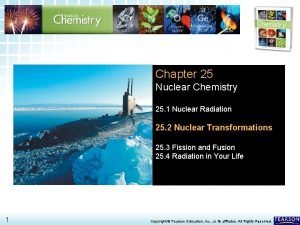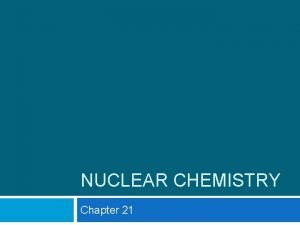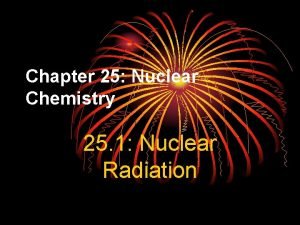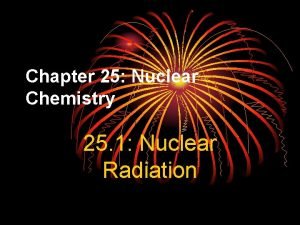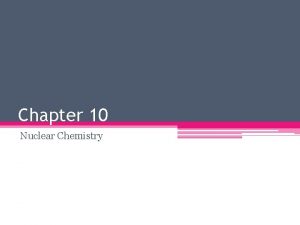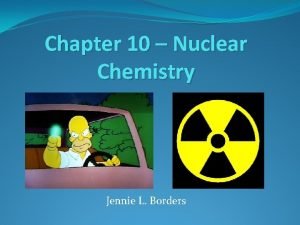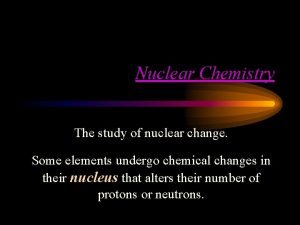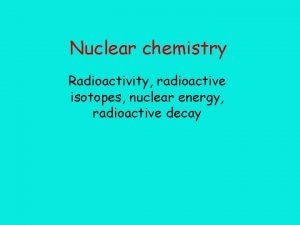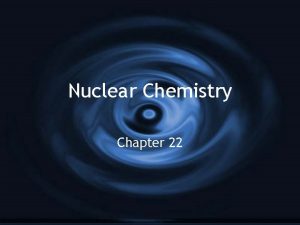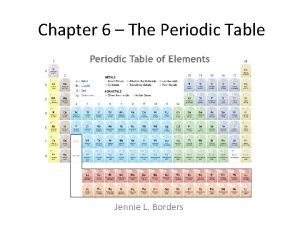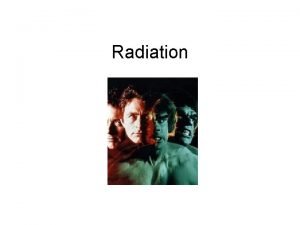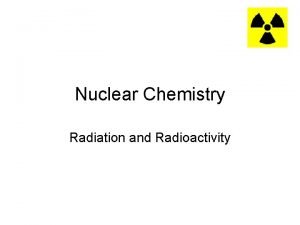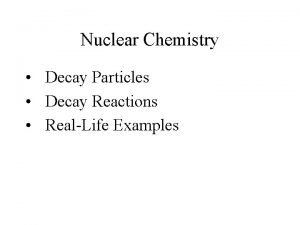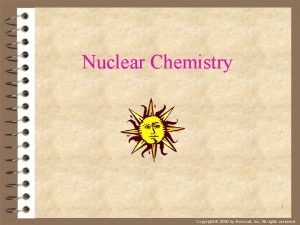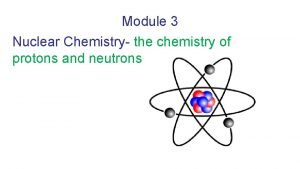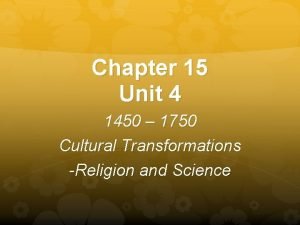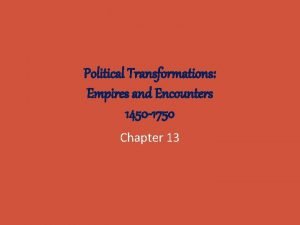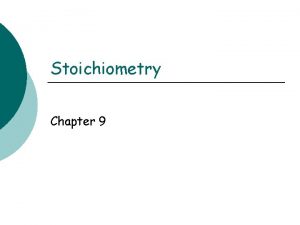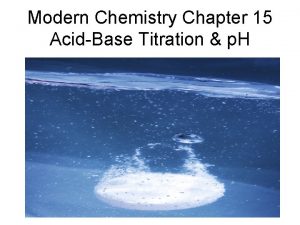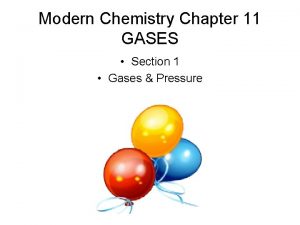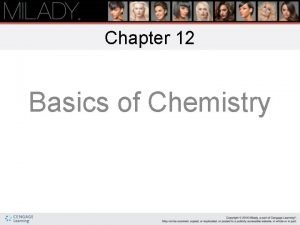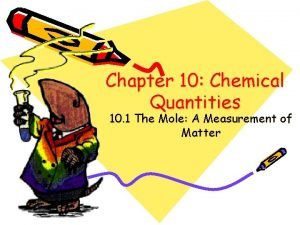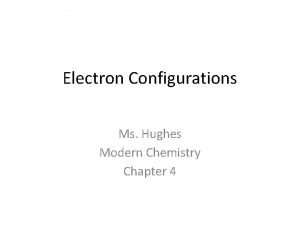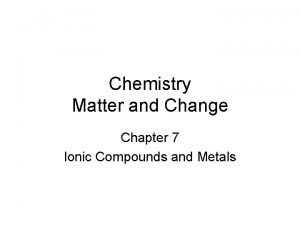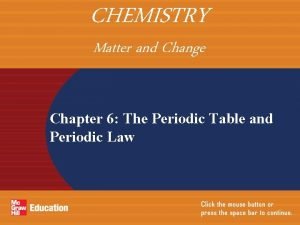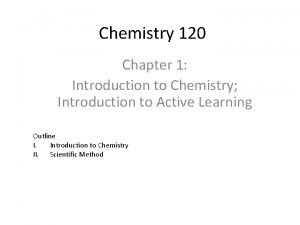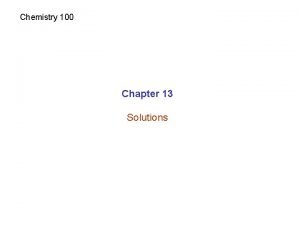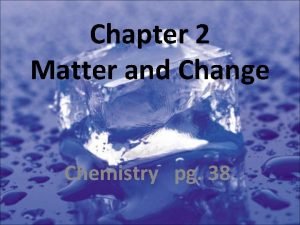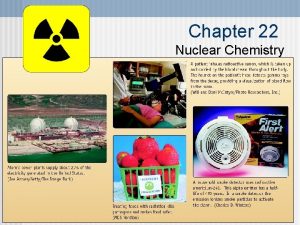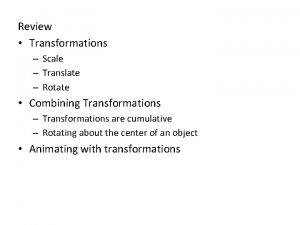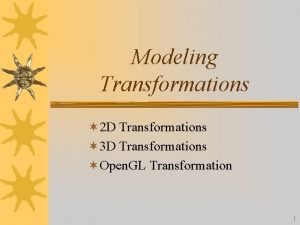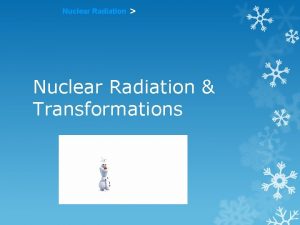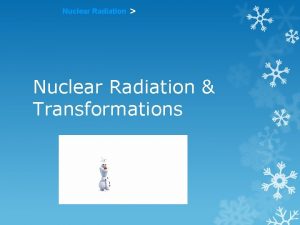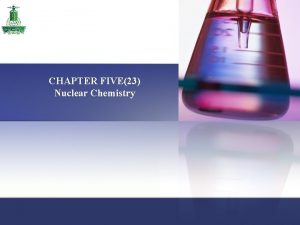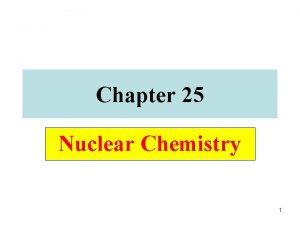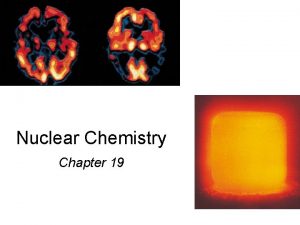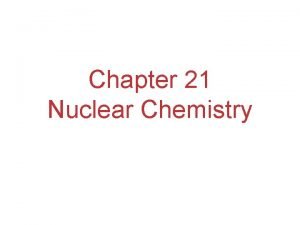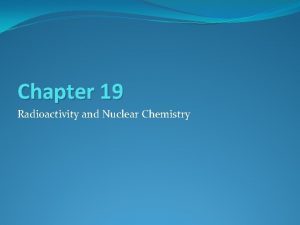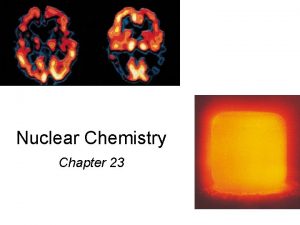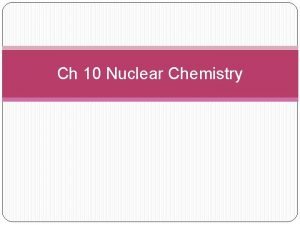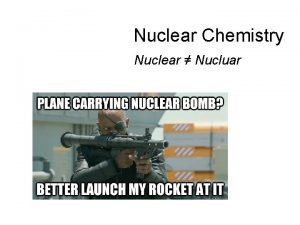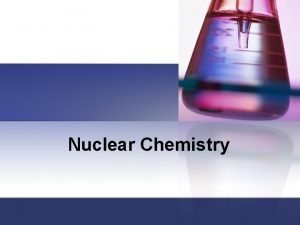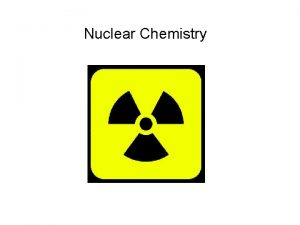25 2 Nuclear Transformations Chapter 25 Nuclear Chemistry

























































- Slides: 57

25. 2 Nuclear Transformations > Chapter 25 Nuclear Chemistry 25. 1 Nuclear Radiation 25. 2 Nuclear Transformations 25. 3 Fission and Fusion 25. 4 Radiation in Your Life 1 Copyright © Pearson Education, Inc. , or its affiliates. All Rights Reserved.

25. 2 Nuclear Transformations > CHEMISTRY & YOU What is the source of radon in homes? Radon may accumulate in a basement that is not well ventilated. Test kits are available to measure the levels of radon in a building. 2 Copyright © Pearson Education, Inc. , or its affiliates. All Rights Reserved.

Nuclear Stability and 25. 2 Nuclear Transformations > Decay Nuclear Stability and Decay What determines the type of decay a radioisotope undergoes? 3 Copyright © Pearson Education, Inc. , or its affiliates. All Rights Reserved.

Nuclear Stability and 25. 2 Nuclear Transformations > Decay The nuclear force is an attractive force that acts between all nuclear particles that are extremely close together, such as protons and neutrons in a nucleus. 4 Copyright © Pearson Education, Inc. , or its affiliates. All Rights Reserved.

Nuclear Stability and 25. 2 Nuclear Transformations > Decay The nuclear force is an attractive force that acts between all nuclear particles that are extremely close together, such as protons and neutrons in a nucleus. • At these short distances, the nuclear force dominates over electromagnetic repulsions and holds the nucleus together. 5 Copyright © Pearson Education, Inc. , or its affiliates. All Rights Reserved.

25. 2 Nuclear Transformations > Interpret Data The stability of a nucleus depends on the ratio of neutrons to protons. • This graph shows the number of neutrons vs. the number of protons for all known stable nuclei. 6 Copyright © Pearson Education, Inc. , or its affiliates. All Rights Reserved.

25. 2 Nuclear Transformations > Interpret Data The stability of a nucleus depends on the ratio of neutrons to protons. • The region of the graph in which these points are located is called the band of stability. 7 Copyright © Pearson Education, Inc. , or its affiliates. All Rights Reserved.

25. 2 Nuclear Transformations > Interpret Data The stability of a nucleus depends on the ratio of neutrons to protons. • For elements of low atomic number (below about 20), this ratio is about 1. • Above atomic number 20, stable nuclei have more neutrons than protons. 8 Copyright © Pearson Education, Inc. , or its affiliates. All Rights Reserved.

Nuclear Stability and 25. 2 Nuclear Transformations > Decay A nucleus may be unstable and undergo spontaneous decay for different reasons. The neutron-to-proton ratio in a radioisotope determines the type of decay that occurs. 9 Copyright © Pearson Education, Inc. , or its affiliates. All Rights Reserved.

Nuclear Stability and 25. 2 Nuclear Transformations > Decay Some nuclei are unstable because they have too many neutrons relative to the number of protons. • When one of these nuclei decays, a neutron emits a beta particle (fast-moving electron) from the nucleus. 10 Copyright © Pearson Education, Inc. , or its affiliates. All Rights Reserved.

Nuclear Stability and 25. 2 Nuclear Transformations > Decay Some nuclei are unstable because they have too many neutrons relative to the number of protons. • When one of these nuclei decays, a neutron emits a beta particle (fast-moving electron) from the nucleus. – A neutron that emits an electron becomes a proton. 1 0 11 n 1 1 p + 0 – 1 e Copyright © Pearson Education, Inc. , or its affiliates. All Rights Reserved.

Nuclear Stability and 25. 2 Nuclear Transformations > Decay Some nuclei are unstable because they have too many neutrons relative to the number of protons. • When one of these nuclei decays, a neutron emits a beta particle (fast-moving electron) from the nucleus. – A neutron that emits an electron becomes a proton. 1 0 n 1 1 p + 0 – 1 e – This process is known as beta emission. – It increases the number of protons while decreasing the number of neutrons. 12 Copyright © Pearson Education, Inc. , or its affiliates. All Rights Reserved.

Nuclear Stability and 25. 2 Nuclear Transformations > Decay Radioisotopes that undergo beta emission include the following. 66 29 13 Cu 66 30 14 6 14 7 C Zn + N + 0 – 1 e e Copyright © Pearson Education, Inc. , or its affiliates. All Rights Reserved.

Nuclear Stability and 25. 2 Nuclear Transformations > Decay Other nuclei are unstable because they have too few neutrons relative to the number of protons. • These nuclei increase their stability by converting a proton to a neutron. – An electron is captured by the nucleus during this process, which is called electron capture. 59 28 37 18 14 Ni + 0 – 1 Ar + 0 – 1 e 59 27 Co e 37 17 Cl Copyright © Pearson Education, Inc. , or its affiliates. All Rights Reserved.

Nuclear Stability and 25. 2 Nuclear Transformations > Decay A positron is a particle with the mass of an electron but a positive charge. • Its symbol is 0 +1 e. • During positron emission, a proton changes to a neutron, just as in electron capture. 8 5 15 8 B 8 4 O 15 7 Be + N + 0 +1 e e – When a proton is converted to a neutron, the atomic number decreases by 1 and the number of neutrons increases by 1. 15 Copyright © Pearson Education, Inc. , or its affiliates. All Rights Reserved.

Nuclear Stability and 25. 2 Nuclear Transformations > Decay Nuclei that have an atomic number greater than 83 are radioactive. • These nuclei have both too many neutrons and too many protons to be stable. – Therefore, they undergo radioactive decay. • Most of them emit alpha particles. – Alpha emission increases the neutron-to-proton ratio, which tends to increase the stability of the nucleus. 16 Copyright © Pearson Education, Inc. , or its affiliates. All Rights Reserved.

Nuclear Stability and 25. 2 Nuclear Transformations > Decay In alpha emission, the mass number decreases by four and the atomic number decreases by two. 226 88 232 90 17 Ra 222 86 Th 228 88 Rn + 4 2 He Ra + 4 2 He Copyright © Pearson Education, Inc. , or its affiliates. All Rights Reserved.

Nuclear Stability and 25. 2 Nuclear Transformations > Decay Recall that conservation of mass is an important property of chemical reactions. • In contrast, mass is not conserved during nuclear reactions. • An extremely small quantity of mass is converted into energy released during radioactive decay. 18 Copyright © Pearson Education, Inc. , or its affiliates. All Rights Reserved.

25. 2 Nuclear Transformations > During nuclear decay, if the atomic number decreases by one but the mass number is unchanged, the radiation emitted is A. a positron. B. an alpha particle. C. a beta particle. D. a proton. 19 Copyright © Pearson Education, Inc. , or its affiliates. All Rights Reserved.

25. 2 Nuclear Transformations > During nuclear decay, if the atomic number decreases by one but the mass number is unchanged, the radiation emitted is A. a positron. B. an alpha particle. C. a beta particle. D. a proton. 20 Copyright © Pearson Education, Inc. , or its affiliates. All Rights Reserved.

25. 2 Nuclear Transformations > Half-Life How much of a radioactive sample remains after each half-life? 21 Copyright © Pearson Education, Inc. , or its affiliates. All Rights Reserved.

25. 2 Nuclear Transformations > Interpret Graphs A half-life (t 1) is the time required for one 2 half of the nuclei in a radioisotope sample to decay to products. After each halflife, half of the original radioactive atoms have decayed into atoms of a new element. 22 Copyright © Pearson Education, Inc. , or its affiliates. All Rights Reserved.

25. 2 Nuclear Transformations > Half-Life Comparing Half-Lives Half-lives can be as short as a second or as long as billions of years. Half-Lives of Some Naturally Occurring Radioisotopes Isotope 23 Half-life Radiation emitted Carbon-14 5. 73 × 103 years b Potassium-40 1. 25 × 109 years b, g Radon-222 3. 8 days a Radium-226 1. 6 × 103 years a, g Thorium-234 24. 1 days b, g Uranium-235 7. 0 × 108 years a, g Uranium-238 4. 5 × 109 years a Copyright © Pearson Education, Inc. , or its affiliates. All Rights Reserved.

25. 2 Nuclear Transformations > Half-Life Comparing Half-Lives • Scientists use half-lives of some long-term radioisotopes to determine the age of ancient objects. • Many artificially produced radioisotopes have short half-lives, which makes them useful in nuclear medicine. – Short-lived isotopes are not a long-term radiation hazard for patients. 24 Copyright © Pearson Education, Inc. , or its affiliates. All Rights Reserved.

25. 2 Nuclear Transformations > Half-Life Comparing Half-Lives Uranium-238 decays through a complex series of unstable isotopes to the stable isotope lead-206. • The age of uraniumcontaining minerals can be estimated by measuring the ratio of uranium-238 to lead -206. 25 • Because the half-life of uranium-238 is 4. 5 × 109 years, it is possible to use its half-life to date rocks as old as the solar system. Copyright © Pearson Education, Inc. , or its affiliates. All Rights Reserved.

25. 2 Nuclear Transformations > CHEMISTRY & YOU Uranium compounds are found in rocks and in soils that form from these rocks. How can these uranium compounds lead to a buildup of radon in homes and other buildings? 26 Copyright © Pearson Education, Inc. , or its affiliates. All Rights Reserved.

25. 2 Nuclear Transformations > CHEMISTRY & YOU Uranium compounds are found in rocks and in soils that form from these rocks. How can these uranium compounds lead to a buildup of radon in homes and other buildings? Radon gas is a product of the decay of uranium. As the uranium compounds in the soil beneath homes and buildings decay, radon is produced and seeps into the structure. 27 Copyright © Pearson Education, Inc. , or its affiliates. All Rights Reserved.

25. 2 Nuclear Transformations > Half-Life Radiocarbon Dating Plants use carbon dioxide to produce carbon compounds, such as glucose. • The ratio of carbon-14 to other carbon isotopes is constant during an organism’s life. • When an organism dies, it stops exchanging carbon with the environment and its radioactive 14 6 C atoms decay without being replaced. • Archaeologists can use this data to estimate when an organism died. 28 Copyright © Pearson Education, Inc. , or its affiliates. All Rights Reserved.

25. 2 Nuclear Transformations > Half-Life Exponential Decay Function You can use the following equation to calculate how much of an isotope will remain after a given number of half-lives. A = A 0 1 2 n • A stands for the amount remaining. • A 0 stands for the initial amount. • n stands for the number of half-lives. 29 Copyright © Pearson Education, Inc. , or its affiliates. All Rights Reserved.

25. 2 Nuclear Transformations > Half-Life Exponential Decay Function A = A 0 1 2 n • The exponent n indicates how many times A 0 must be multiplied by 12 to determine A. 30 Copyright © Pearson Education, Inc. , or its affiliates. All Rights Reserved.

25. 2 Nuclear Transformations > Half-Life Exponential Decay Function This table shows examples in which n = 1 and n = 2. Decay of Initial Amount (A 0) of Radioisotope Half-Life Amount Remaining 0 A 0 × ( 12 )0 = A 0 1 A 0 × ( 12 )1 = A 0 × 12 2 A 0 × ( 12 )2 = A 0 × 12 31 Copyright © Pearson Education, Inc. , or its affiliates. All Rights Reserved.

25. 2 Nuclear Transformations > Sample Problem 25. 1 Using Half-Lives in Calculations Carbon-14 emits beta radiation and decays with a half-life (t 12 ) of 5730 years. Assume that you start with a mass of 2. 00 × 10– 12 g of carbon-14. a. How long is three half-lives? b. How many grams of the isotope remain at the end of three half-lives? 32 Copyright © Pearson Education, Inc. , or its affiliates. All Rights Reserved.

25. 2 Nuclear Transformations > Sample Problem 25. 1 1 Analyze List the knowns and the unknowns. • To calculate the length of three half-lives, multiply the half-life by three. • To find the mass of the radioisotope 1 remaining, multiply the original mass by 2 for each half-life that has elapsed. KNOWNS UNKNOWNS 3 half-lives = ? years t 1 = 5730 years 2 initial mass (A 0) = 2. 00 × 10– 12 g mass remaining = ? g number of half-lives (n) = 3 33 Copyright © Pearson Education, Inc. , or its affiliates. All Rights Reserved.

25. 2 Nuclear Transformations > Sample Problem 25. 1 2 Calculate Solve for the unknowns. a. Multiply the half-life of carbon-14 by the total number of half-lives. t 12 × n = 5730 years × 3 = 17, 190 years 34 Copyright © Pearson Education, Inc. , or its affiliates. All Rights Reserved.

25. 2 Nuclear Transformations > Sample Problem 25. 1 2 Calculate Solve for the unknowns. b. The initial mass of carbon-14 is reduced by one-half for each half-life. So, multiply by 12 three times. Remaining mass = 2. 00 × 10– 12 g × 12 = 0. 250 × 10– 12 g = 2. 50 × 10– 13 g 35 Copyright © Pearson Education, Inc. , or its affiliates. All Rights Reserved.

25. 2 Nuclear Transformations > Sample Problem 25. 1 2 Calculate Solve for the unknowns. b. You can get the same answer by using the equation for an exponential decay function. () A = A 0 () g) ( ) 3 1 n 1 – 12 g) = (2. 00 × 10 2 2 = (2. 00 × 10– 12 1 8 = 0. 250 × 10– 12 g = 2. 50 × 10– 13 g 36 Copyright © Pearson Education, Inc. , or its affiliates. All Rights Reserved.

25. 2 Nuclear Transformations > Sample Problem 25. 1 3 Evaluate Do the results make sense? • The mass of carbon-14 after three half-lives should be one-eighth of the original mass. • If you divide 2. 5 × 10– 13 g by 2. 00 × 10– 12 g, you will get 12. 5%, or 18. 37 Copyright © Pearson Education, Inc. , or its affiliates. All Rights Reserved.

25. 2 Nuclear Transformations > The half-life of phosphorus-32 is 14. 3 days. How many milligrams of phosphorus-32 remain after 100. 1 days if you begin with 2. 5 mg of the radioisotope? 38 Copyright © Pearson Education, Inc. , or its affiliates. All Rights Reserved.

25. 2 Nuclear Transformations > The half-life of phosphorus-32 is 14. 3 days. How many milligrams of phosphorus-32 remain after 100. 1 days if you begin with 2. 5 mg of the radioisotope? n = 100. 1 days × () A = A 0 39 1 half-life = 7 half-lives 14. 3 days () ( ) = 2. 0 × 10 1 n 1 7 2 = (2. 5 mg) 2 1 = (2. 5 mg) 128 – 2 mg Copyright © Pearson Education, Inc. , or its affiliates. All Rights Reserved.

25. 2 Nuclear Transformations > Transmutation Reactions What are two ways in which transmutation can occur? 40 Copyright © Pearson Education, Inc. , or its affiliates. All Rights Reserved.

25. 2 Nuclear Transformations > Transmutation Reactions For thousands of years, alchemists tried to change lead into gold. • What they wanted to achieve is transmutation, or the conversion of an atom of one element into an atom of another element. 41 Copyright © Pearson Education, Inc. , or its affiliates. All Rights Reserved.

25. 2 Nuclear Transformations > Transmutation Reactions Transmutation can occur by radioactive decay, or when particles bombard the nucleus of an atom. • The particles may be protons, neutrons, alpha particles, or small atoms. 42 Copyright © Pearson Education, Inc. , or its affiliates. All Rights Reserved.

25. 2 Nuclear Transformations > Transmutation Reactions Ernst Rutherford performed the earliest artificial transmutation in 1919. • He bombarded nitrogen gas with alpha particles. 14 4 18 7 N + 2 He 9 F Nitrogen-14 Alpha particle Fluorine-18 • The unstable fluorine atoms quickly decay to form a stable isotope of oxygen and a proton. 18 9 F Fluorine-18 43 17 8 O + Oxygen-17 1 1 p Proton Copyright © Pearson Education, Inc. , or its affiliates. All Rights Reserved.

25. 2 Nuclear Transformations > Transmutation Reactions Rutherford’s experiment eventually led to the discovery of the proton. P 1 1 Proton 4 2 He Alpha particle 14 7 N Nitrogen atom 18 9 F Unstable fluorine atom 17 8 O Oxygen • He and other scientists noticed a pattern as they did different transmutation experiments. Hydrogen nuclei were emitted. • Scientists realized that these hydrogen nuclei (protons) must have a fundamental role in atomic structure. 44 Copyright © Pearson Education, Inc. , or its affiliates. All Rights Reserved.

25. 2 Nuclear Transformations > Transmutation Reactions James Chadwick’s discovery of the neutron in 1932 also involved a transmutation experiment. • Neutrons were produced when beryllium-9 was bombarded with alpha particles. 9 4 Be + Beryllium-9 45 4 2 He Alpha particle 12 6 C + 1 0 n Carbon-12 Neutron Copyright © Pearson Education, Inc. , or its affiliates. All Rights Reserved.

25. 2 Nuclear Transformations > Transmutation Reactions Elements with atomic numbers above 92, the atomic number of uranium, are called transuranium elements. • None of these elements occurs in nature. • All of them are radioactive. • All transuranium elements undergo transmutation. 46 Copyright © Pearson Education, Inc. , or its affiliates. All Rights Reserved.

25. 2 Nuclear Transformations > Transmutation Reactions Transuranium elements are synthesized in nuclear reactors and nuclear accelerators. • Reactors produce beams of lowenergy particles. • Accelerators are used to increase the speed of bombarding particles to very high speeds. – The European Organization for Nuclear Research, CERN, has a number of accelerators. The figure at right shows CERN’s largest accelerator. 47 Copyright © Pearson Education, Inc. , or its affiliates. All Rights Reserved.

25. 2 Nuclear Transformations > Transmutation Reactions • When uranium-238 is bombarded with the relatively slow neutrons from a nuclear reactor, some uranium nuclei capture these neutrons. The product is uranium 239. 238 1 239 92 U + 0 n 92 U • Uranium-239 is radioactive and emits a beta particle. The other product is an isotope of the artificial radioactive element neptunium (atomic number 93). 239 92 U 239 93 Np + 0 – 1 e • Neptunium is unstable and decays, emitting a beta particle and a second artificial element, plutonium (atomic number 94). 239 93 48 Np 239 94 Pu + 0 – 1 e Copyright © Pearson Education, Inc. , or its affiliates. All Rights Reserved.

25. 2 Nuclear Transformations > Transmutation Reactions Scientists in Berkeley, California, synthesized the first two artificial elements in 1940. • Since that time, more than 20 additional transuranium elements have been produced artificially. 49 Copyright © Pearson Education, Inc. , or its affiliates. All Rights Reserved.

25. 2 Nuclear Transformations > Which of the following always changes when transmutation occurs? A. The number of electrons B. The mass number C. The atomic number D. The number of neutrons 50 Copyright © Pearson Education, Inc. , or its affiliates. All Rights Reserved.

25. 2 Nuclear Transformations > Which of the following always changes when transmutation occurs? A. The number of electrons B. The mass number C. The atomic number D. The number of neutrons 51 Copyright © Pearson Education, Inc. , or its affiliates. All Rights Reserved.

25. 2 Nuclear Transformations > Key Concepts The neutron-to-proton ratio in a radioisotope determines the type of decay that occurs. After each half-life, half of the original radioactive atoms have decayed into atoms of a new element. Transmutation can occur by radioactive decay, or when particles bombard the nucleus of an atom. 52 Copyright © Pearson Education, Inc. , or its affiliates. All Rights Reserved.

25. 2 Nuclear Transformations > Key Equation A = A 0 53 1 2 n Copyright © Pearson Education, Inc. , or its affiliates. All Rights Reserved.

25. 2 Nuclear Transformations > Glossary Terms • nuclear force: an attractive force that acts between all nuclear particles that are extremely close together, like protons and neutrons in a nucleus • band of stability: the location of stable nuclei on a neutron-vs. -proton plot • positron: a particle with the mass of an electron but a positive charge 54 Copyright © Pearson Education, Inc. , or its affiliates. All Rights Reserved.

25. 2 Nuclear Transformations > Glossary Terms • half-life: the time required for one-half of the nuclei of a radioisotope sample to decay to products • transmutation: the conversion of an atom of one element to an atom of another element • transuranium elements: any elements in the periodic table with atomic number above 92, the atomic number of uranium 55 Copyright © Pearson Education, Inc. , or its affiliates. All Rights Reserved.

25. 2 Nuclear Transformations > BIG IDEA Electrons and the Structure of Atoms • Unstable atomic nuclei decay by emitting alpha or beta particles. • Often gamma rays are emitted. 56 Copyright © Pearson Education, Inc. , or its affiliates. All Rights Reserved.

25. 2 Nuclear Transformations > END OF 25. 2 57 Copyright © Pearson Education, Inc. , or its affiliates. All Rights Reserved.
 Chapter 24: nuclear chemistry answer key
Chapter 24: nuclear chemistry answer key Chapter 25 nuclear chemistry answer key
Chapter 25 nuclear chemistry answer key Chapter 21 review nuclear chemistry
Chapter 21 review nuclear chemistry Chapter 25 nuclear chemistry
Chapter 25 nuclear chemistry Chapter 25 nuclear chemistry
Chapter 25 nuclear chemistry Chapter 10 nuclear chemistry
Chapter 10 nuclear chemistry Chapter 10 nuclear chemistry
Chapter 10 nuclear chemistry Lesson 15 nuclear quest nuclear reactions
Lesson 15 nuclear quest nuclear reactions Fisión nuclear vs fision nuclear
Fisión nuclear vs fision nuclear Chernobyl webquest answer key
Chernobyl webquest answer key Chemistry
Chemistry Application of nuclear chemistry
Application of nuclear chemistry Application of nuclear chemistry
Application of nuclear chemistry What is nuclear charge in chemistry
What is nuclear charge in chemistry Anatomy of a wave
Anatomy of a wave Applications of nuclear chemistry
Applications of nuclear chemistry Nuclear chemistry
Nuclear chemistry Real life examples of fusion
Real life examples of fusion Copyright
Copyright Nuclear chemistry
Nuclear chemistry Applications of nuclear chemistry
Applications of nuclear chemistry Ib organic chemistry functional groups
Ib organic chemistry functional groups Inorganic vs organic chemistry
Inorganic vs organic chemistry Imagep unscramble
Imagep unscramble Chapter 15 cultural transformations
Chapter 15 cultural transformations Chapter 5 political transformations empires and encounters
Chapter 5 political transformations empires and encounters Chapter 28 transformations around the globe
Chapter 28 transformations around the globe Approach chemistry chalk chapter
Approach chemistry chalk chapter Chemistry chapter 9 stoichiometry
Chemistry chapter 9 stoichiometry Thermodynamic vs kinetic control
Thermodynamic vs kinetic control Importance of organic chemistry
Importance of organic chemistry Modern chemistry chapter 9 stoichiometry
Modern chemistry chapter 9 stoichiometry What is the chemical formula for tetranitrogen heptoxide?
What is the chemical formula for tetranitrogen heptoxide? Modern chemistry chapter 15
Modern chemistry chapter 15 Chapter 14 review acids and bases
Chapter 14 review acids and bases Chapter 13 ions in aqueous solutions
Chapter 13 ions in aqueous solutions Chapter 12 review solutions section 1
Chapter 12 review solutions section 1 Law of combining volumes
Law of combining volumes Ap chemistry chapter 18 electrochemistry test
Ap chemistry chapter 18 electrochemistry test Chemistry matter and change chapter 7
Chemistry matter and change chapter 7 Chapter 10 chemistry study guide
Chapter 10 chemistry study guide Chapter 8 review chemical equations and reactions
Chapter 8 review chemical equations and reactions Chemistry chapter 9 chemical names and formulas
Chemistry chapter 9 chemical names and formulas Chapter 7 chemistry review
Chapter 7 chemistry review Chapter 22 review organic chemistry section 1 answers
Chapter 22 review organic chemistry section 1 answers What's the difference between solution and suspension
What's the difference between solution and suspension Chemistry chapter 10 chemical quantities
Chemistry chapter 10 chemical quantities Carboxylic acid h3o+ reaction
Carboxylic acid h3o+ reaction Modern chemistry chapter 4
Modern chemistry chapter 4 Chemistry central science 14th edition
Chemistry central science 14th edition Chemistry matter and change chapter 7
Chemistry matter and change chapter 7 Chemistry matter and change chapter 6
Chemistry matter and change chapter 6 Stoichiometry chapter 11 study guide
Stoichiometry chapter 11 study guide Chapter 10 study guide the mole
Chapter 10 study guide the mole Chapter 1 introduction to chemistry
Chapter 1 introduction to chemistry Chapter 13 mixtures and solutions answers
Chapter 13 mixtures and solutions answers Stoichiometry test review
Stoichiometry test review 2 matter and change answer key
2 matter and change answer key

